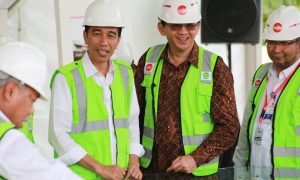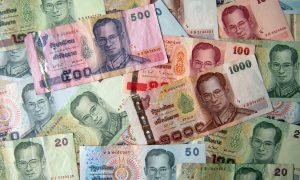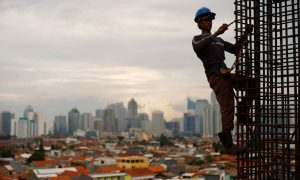In a series of public lectures beginning in 2016, Professor Terence Gomez began to distil the findings of his latest research into corporate governance in Malaysia. The first finding was a marked reduction in the holding of private directorships by members of the ruling Barisan Nasional coalition. The second was a major growth in the influence and power of Government Linked Companies (GLCs; individual state-owned enterprises) and Government Linked Investment Companies (GLICs; state-owned investment vehicles) over the Malaysian economy.
What such findings did was to challenge typical understandings of “money politics”, and the relationship between politics and business, in Malaysia. The data pointed not towards the direct influence of the political class over private enterprise, but rather a growing centralisation of economic and political power in the Office of the Prime Minister and the Minister of Finance (an office which is today held concurrently), and the influence of the state over the economy through the GLCs and seven large GLICs. The resulting book, Minister of Finance Incorporated: Ownership and Control of Corporate Malaysia, written alongside Gomez’s team of research assistants, has brought into the spotlight not only problems of political centralisation and GLC/GLIC governance reform, but also the effect of the very structure of the Malaysian economy on the country’s continuing prospects for development. (Disclosure: the author works for Gerakbudaya, the Malaysia/Singapore publisher of Prof Gomez’s book, but writes here in a personal capacity.)
Malaysia’s state developmentalism
Many of the GLICs have their origins in the period from the 1950s to the 1970s, and during this time came to play an important role in the project of state developmentalism. Gomez, however, marks the Asian Financial Crisis—and the political and economic crisis it produced—as a crucial moment in the emergence of GLCs and GLICs. With highly indebted, “too-big-to-fail” companies in the private sector bankrupted by the crisis, GLICs were mobilised by the government to bail them out. After Anwar Ibrahim’s failed challenge to the leadership of prime minister Mahathir Mohamad, GLICs were mobilised to appropriate the businesses of Anwar’s cronies.
The growth of GLICs was then a means to resolve the contradictions and limitations of the political and economic development that arose under Mahathir. This was to continue during the fallout of the conflict between Mahathir and Daim Zainuddin—which saw the assets of Daim’s allies and proxies transferred to GLICs—and a program of bank consolidation which, in the name of rationalisation, drastically increased the role of government in the banking sector.
The growing importance of the GLICs to economic development seen in the attention paid to them by Malaysia’s next two prime ministers. Under Abdullah Badawi the GLC Transformation Programme was launched. It sought to have GLCs operate on a more commercial basis, divesting from non-core investments, offering higher dividend returns, cooperating more with the private sector, and internationalising their operations. Just as significantly, through the emphasis on the vendor system, they were to help link up Malaysia’s large SME sector with local and foreign supply chains.
When Najib came to power with his transformation agenda, he noted the way in which rent seeking and patronage was harming the economy. Through the New Economic Model he called for the reduction in the role of the state in business, an overhaul of the system of race-based affirmative action, and the reform and privatisation of GLCs. Nevertheless, pushback from prominent politicians such as Mahathir and right-wing Malay NGOs led to a reversal of this policy. By 2013, Najib had unveiled the Bumiputera Economic Empowerment (BEE) policy which, against the prescriptions of the New Economic Model, mobilised GLCs to promote “market friendly affirmative action” through the Bumiputera Vendor Development Programme. From 2009 onwards, Najib would increasingly tap GLCs to generate growth and infrastructure development, as well as to draw investments from foreign State Owned Enterprises (SOEs), particularly from China, which saw the state come to play an increasingly dominant role in the economy.
This about turn was more than anything rooted in the political legacy of the New Economic Policy, with its twin-pronged focus on state intervention to correct race-based distributional inequalities and to promote continuous economic development.
Ownership and control
When James Puthucheary, from his cell in Changi Prison, embarked on his investigation into the structure and organisation of the Malayan economy, it was to the twin problems of ownership and control that he turned. Defined, he argued, by an uneven and unequal model of colonial development, the central economic problem of Malaya was not the role played by the Chinese middleman but the domination of foreign clearing houses and foreign capital over key areas of economic life. This structure was, he said, central to understanding the exploitation of the peasant as well as the limitations on the future development of the Malayan economy. To overcome this, Puthucheary would argue for a program of state intervention in the economy to mobilise the state to overcome existing inequalities and unevenness and to transform the dominant model of ownership and control.

Post-1969, intervention occurred under the New Economic Policy, but without reaching a fundamental resolution to the uneven patterns of ownership and control. While foreign ownership of the economy was reduced, this was largely undertaken without radically affecting major foreign interests in the economy. Malaysia’s development was to continue to depend heavily on foreign direct investment rather than domestic capital, ensuring that, unlike South Korea and Taiwan, Malaysia wasn’t to nurture domestic giants such as Samsung or Foxconn. Rather, the state, in alliance with wealthy tycoons, was to play an increasing role in the economy, maintaining a centralisation and inequality of assets and wealth, both through systems of selective privatisation and later through the GLCs.
More recently, one of the findings of Gomez’s research is the resurgence of foreign ownership in the Malaysian economy, with companies such as Digi, Nestlé, and British American Tobacco leading the list of Malaysian companies by market capitalisation, highlighting the continuing dependence and openness of the Malaysian economy. Meanwhile, in the realm of rural development, the focus was not on major land redistribution—which kickstarted economic miracles in South Korea and Taiwan—but more selective land distribution through FELDA and rural development schemes.
Central to Puthucheary’s analysis of ownership and control was the problem of national development, both in terms of the development of a nation out of the various races of Malaya and the mobilisation of the economy for the development and prosperity of such a nation. In similar terms, central to the critique of Gomez and others of the NEP has been its inability to promote such a meaningful and broad-based national development. Gomez’s research into relations between politics and business has been highly critical of the role of selective privatisation and bumiputera equity quotas in the promotion of money politics at the expense of meaningful economic development.
In a 2005 report, Gomez, alongside Lim Teck Ghee, was also to note how the focus on bumiputera equity had ignored the problem of the broad-based development of the Malay community and the growth of the country’s SMEs. He noted how within the SME sphere successful multi-ethnic business relations were being fostered outside of the scope of the NEP. In his latest book, Gomez has highlighted the role played by the concentration of economic control in the Ministry of Finance in disincentivising industrial growth and investment for fear of expropriation of business by the state—evidenced, he argues, by Malaysia’s premature deindustrialisation, and the growing dominance of the service sector within the Malaysian economy.
Here the problem of the middle-income trap emerges as central to the contemporary pattern of ownership and control as outlined by Gomez—and thus the problem of the inner limits of modes of development, as proposed by Puthucheary, becomes restated. Today, can a political economy model defined by high levels of centralisation, and dominated by the interests of GLICs, provide the kind of broad-based economic development that can move Malaysia, and bangsa Malaysia, towards high-income status? Or is a new model of ownership and control required?
The new developmentalism in Southeast Asia
In an earlier co-edited volume, Government-Linked Companies and Sustainable, Equitable Development, Gomez and other scholars highlighted the growing importance of GLCs and SOEs in the aftermath of the 2008 economic crisis in challenging liberal capitalist understandings of economic development. Taking a broader view, Joshua Kurtlantzick has highlighted the contemporary resurgence of state capitalism within global political economy. Fundamental to this has been the growing importance of SOEs, from Petrobras in Brazil to Gazprom in Russia or Deutsche Bahn in Germany.
This tendency is becoming increasingly evident in Southeast Asia’s contemporary political economy.
In Indonesia, SOEs have formed the centrepiece of Joko Widodo’s developmental agenda, being mobilised to fill the gaps in the development of major infrastructure projects, where the private sector has been reluctant to invest in high-risk or capital intensive projects, while busying itself with rent-seeking behaviour. More recently, Danang Widoyoko has read the fall of former Jakarta governor Ahok as a struggle between Ahok’s SOE-centric development agenda—evident in the major land clearance projects in Jakarta—and politically-connected private interests who came to resent the increased role of SOEs in key economic sectors. The struggle in Jakarta was thus, on Widoyoko’s reading, a struggle between two factions of capital: state, and crony.
In the Philippines, Rodrigo Duterte has begun to pursue a similarly ambitious development agenda, headlined by massive infrastructure plans, under his “Build, Build, Build” program. Similar to the case of Indonesia, in the face of private sector inertia in infrastructure development the state has moved in to directly finance and organise such infrastructure projects both through the mobilisation of SOEs as well as through the promotion of public-private partnerships. The emphasis in the Philippines, however, is on the public sector’s leading projects through “Hybrid PPPs”, with projects then subsequently bid out to the private sector. Such a program relies heavily on Chinese official development assistance, with Duterte keen to see the Philippines integrated into China’s Belt and Road initiative.
In Thailand, control and reform of SOEs has been a point of struggle between the military and the followers of Thaksin Shinawatra. SOE reform has emerged as an important plank of junta policy, led by an attempt to form a strategic holding company capable of managing SOEs, similar to Singapore’s Temasek or Malaysia’s Khazanah. More recently, in response to a slowdown in the Thai economy, the government has ramped up spending through SOEs, in particular through a new series of infrastructure projects with the aim of boosting growth.
Yet this trend does not represent the re-emergence of a postcolonial developmental state, of the kind Puthucheary and his contemporaries examined. Instead, a new model is emerging, one which tends to blur the difference between the state and market, led by the growing importance of substantially commercialised GLCs, GLICs and SOEs.

If in the 1980s the emergence of “state corporatism”—with concepts such as Malaysia Incorporated—saw close cooperation between the corporate sector and the state, the growing importance of GLCs and GLICs has increasingly promoted parts of the state which do themselves function as corporate entities. Such arrangements allow the state to assume the organisational effectiveness of the market-driven corporate organisation, in combination with the executive authority of the state and offering governments the ability to both financialise assets and render debts “off the books”.
Such strategies are not only economically useful, but also relevant in electoral terms in Southeast Asia. In the context of Indonesia, Eve Warburton has talked of the emergence of a new developmentalism, which places a developmental nationalism at the heart of the political arena—not dissimilar to the effect of Dutertenomics in the Philippines. In the Malaysian context Bridget Welsh has talked of a commercialisation of electoral politics, highlighting the importance of financial transactions emanating from the state and big business in the accrual of electoral support.
In both of these forms, GLCs and GLICs have emerged as central to electoral politics. In the case of Malaysia they have formed the direct vehicles through which the government can raise (or launder) campaign finances, and provide electoral groups with patronage resources during election periods. More generally, they have become vehicles to fill the gap created by the demise of the classic developmental state, exemplified by the establishment of GLC foundations from Yayasan 1MDB, to Yayasan Rakyat 1Malaysia and Yayasan Hasanah, and through the practice of corporate social responsibility. In the same way, GLCs are increasingly used as vehicles for policies of affirmative action or “sustainable” and “inclusive” development.
Alternative visions
This process does not continue uncontested. In Malaysia, a debate is emerging regarding the role played by GLCs and GLICs, and around the role of the state in the corporate sector. The liberal Institute for Democracy and Economic Affairs (IDEAS) has called for government divestment from GLCs, particularly highlighting the tendencies for GLCs to crowd out private sector investment (to which one prominent GLIC responded at length). The G25, a group of Malay thought leaders, has called in a new report for a review of the economic efficacy and impact of GLCs and GLICs, urging the privatisation of non-strategic GLCs and the regulation of existing GLCs to turn them into a catalyst of private sector growth.
Political contestation has also emerged within UMNO over the management of GLICs. Members of Najib’s inner circle and UMNO Youth executive council member Rahman Hussin have accused Khazanah Nasional of underperformance resulting in low dividend returns and a lack of reinvestment into the Malaysian economy. This comes at a time when Khazanah prepares for a change of top management in 2019 amid calls for a new strategic direction.
The opposition coalition Pakatan Harapan used its 2018 Alternative Budget to note the contemporary problem of premature deindustrialisation, and argued for an industrialisation policy driven by SMEs. A key component of this is the privatisation of GLCs, to produce a more level playing field for private enterprise. To this end, Pakatan Harapan proposes to promote a better environment for FDI as well as incentivising domestic direct investments through tax cuts. Yet whether or not this will remain possible, and whether or not it would lapse into FDI-driven privatisation and liberalisation, remains an important question.

For his part, Gomez has noted the ability of GLCs to perform well and contribute towards economic growth. Yet he remains a critic of their centralised political control, and of their use as mechanisms for race-based affirmative action by a predatory state. Such a dichotomy is also applicable to many developing states: while SOEs can help resolve some of the contradictions of economic liberalisation and privatisation, and can act as engines for growth, their ability to act as engines of economic transformation—raising states up the economic value chain—remains more doubtful, as does their ability to produce broad-based and inclusive economic development.
Today this realisation is itself at the centre of ongoing processes of reform within the developmental state. Yet such projects of reform have been undertaken within the context of self-imposed limits, guaranteeing such reforms remain largely conservative: the resurgence of the developmental state in its contemporary form does not imply a substantial redistribution of economic power, let alone its democratisation.
Mahathir and Malaysia’s money politics
In a country where cash is king, soon nothing will happen without bribery, alleges former PM.
This program of limited reformism has reproduced a limited model of development, one which a growing source of discontent. On the one hand a politician such as Rodrigo Duterte has been able to rise to power on an impatience with the outcomes of state-led reform, while on the other hand there has emerged a growing politicisation of current models of development in the form of growing labour activism, popular protests (such as those in Malaysia against GST and the TPP), as well the growth of political movements that place at the centre of their politics problems of labour, welfare, investment, state reform, and inequality.
What is needed today is a critique of contemporary processes of reform capable of exposing their limitations and contradictions, and which therefore lays the groundwork for a politics of development that brings into question contemporary patterns of ownership and control, and their effect on development. Terence Gomez’s critique of government–business ties in Malaysia’s current model of development, and their relationship to the rise of GLCs and GLICs, marks a particularly important step in this direction.
 Facebook
Facebook  Twitter
Twitter  Soundcloud
Soundcloud  Youtube
Youtube  Rss
Rss 



